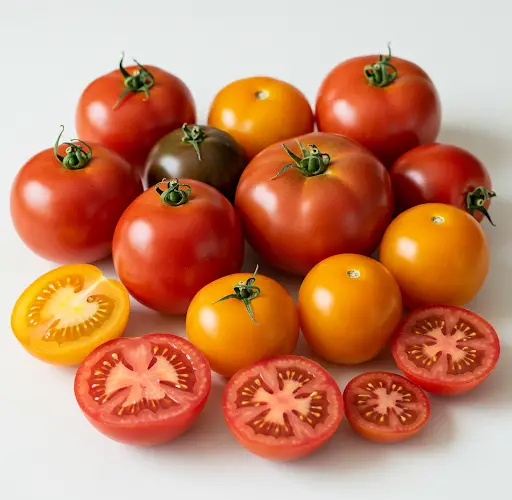Essential Tips for Planting Tomatoes to Ensure a Healthy, Abundant Harvest
Tomatoes are one of the most rewarding crops to grow in the garden, but they can be a little particular when it comes to planting and early care. With just a few simple techniques, you can greatly increase your chances of growing strong, healthy plants that yield large, flavorful fruits all season long.
Whether you’re planting vigorous seedlings or reviving weak ones, these tips will help set the foundation for a successful tomato harvest.
Reviving Weak Tomato Seedlings
It’s not uncommon for tomato seedlings to appear wilted or tired when they’re first brought outside for transplanting. Before you place them in the ground, there’s a simple trick that can help revive them quickly: soak the roots in water.
Submerge the root ball in a bowl or bucket of clean water for about 15 to 30 minutes. For an extra boost, add one tablespoon of sugar to the water. This small dose of sugar acts as an energy source and helps hydrate the plant more effectively. After soaking, your tomato seedlings will perk up and be much better prepared for the transition into the garden.
Deep Planting for Stronger Roots
One of the most important steps when planting tomatoes is to plant them deeply. Tomato plants are unique in that their stems can grow roots wherever they touch soil. By planting more of the stem underground, you encourage the plant to develop a larger and stronger root system.
Dig a hole that’s about 25 to 30 centimeters deep, deep enough so that about two-thirds of the plant will be buried. Remove the lower leaves from the plant before placing it in the hole, leaving only the top sets of leaves exposed above the soil. A robust root system gives the plant better access to water and nutrients, which is especially important during hot, dry weather.
Boosting Nutrients with Organic Amendments
Before placing the seedling in the hole, it’s helpful to add organic fertilizer to provide immediate nutrition. In addition to compost or well-rotted manure, there are two other amendments that are particularly beneficial for tomatoes:
-
Bone Meal: A slow-release natural fertilizer, bone meal is rich in phosphorus, a key nutrient that supports root development, flower formation, and fruit ripening. It also contains calcium, which is essential for overall plant structure and disease resistance.
-
Wood Ash: A natural byproduct of burning untreated wood, wood ash supplies potassium and calcium carbonate. Potassium is critical for fruit development, and calcium carbonate can help neutralize overly acidic soil, making it easier for plants to absorb nutrients.
Sprinkle one tablespoon of either bone meal or wood ash into each planting hole. This provides long-lasting nourishment and helps prevent common nutrient deficiencies as the plant grows.
Preventing Blossom-End Rot
One of the most frustrating problems tomato growers face is blossom-end rot, where the bottom of the fruit becomes black and leathery before it fully ripens. While it may look like a disease, this condition is usually caused by a calcium deficiency in the plant.
Low soil pH, irregular watering, and dry conditions can prevent tomato plants from absorbing enough calcium, even if it’s present in the soil. The use of bone meal or wood ash at planting time can help provide a natural source of calcium and reduce the risk of this problem occurring.
Consistent watering is also key—avoid letting the soil dry out completely between waterings, especially during fruit development.
A Smart Way to Water Tomatoes
Tomatoes prefer to be watered at the roots rather than over the foliage. Wet leaves can invite disease, and surface watering can create a hard crust on the soil, which restricts airflow and water penetration.
An effective watering technique is to bury a plastic pot or plastic bottle (with small holes drilled into it) into the ground next to the tomato plant. Position it close to the roots, about 15–20 cm deep. When you water, pour directly into the buried container. This method delivers moisture deep into the soil where the roots need it most, keeping the surface dry and helping reduce disease pressure.
Final Thoughts
By following these tips—reviving weak seedlings with a sugar water soak, planting deeply, enriching the soil with bone meal or wood ash, and using smart watering methods—you’ll give your tomatoes the best possible start. These small, practical steps make a big difference in producing strong plants and a fruitful harvest.
With a little care and attention, your tomato plants will reward you with a generous supply of juicy, flavorful fruits all summer long.



